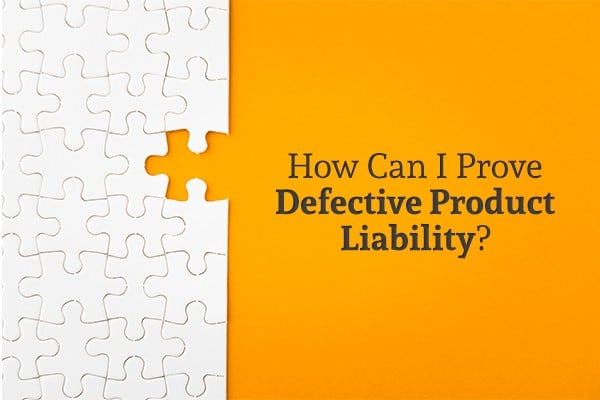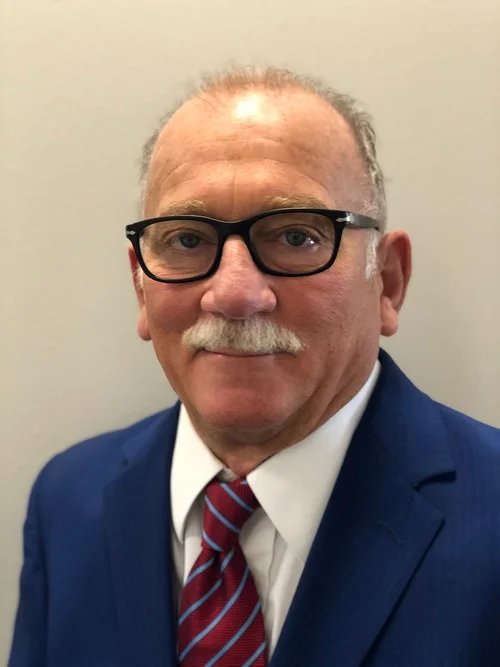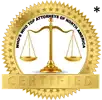
What Do You Need to Prove a Product Liability Claim?
Every year, defective products injure unsuspecting consumers nationwide—causing everything from minor accidents to major, life-altering harm. Arlington and North Texas residents are not immune. When powerful corporations or careless manufacturers put profits ahead of safety, the law gives you the right to pursue justice. At Machi & Associates, P.C., we are recognized as Arlington’s most trusted law firm for product liability claims and are here to guide you through every step.
Product liability claims fall under personal injury law, targeting companies that created, designed, or sold a dangerous or defective item. Whether you’re dealing with a faulty appliance, a dangerous medication, contaminated chemicals, or defectively designed machinery, the consequences can be devastating. Understanding the core components needed to prove a Texas product liability case—and working with the right legal team—can be the difference between receiving fair compensation or getting nothing at all.
Three Main Types of Product Liability Claims in Texas
Product liability law recognizes three essential paths to holding manufacturers, distributors, or retailers accountable:
1. Defective Manufacturing
A manufacturing defect means the product was designed safely but something went wrong during assembly, production, or packaging. This defect may affect just one item or an entire batch. Proving a manufacturing defect often involves forensic analysis, quality control records, and expert testimony. Examples include contamination in foods or medicines, a crucial bolt missing from a toy, or a power tool with a misfitted blade.
2. Defective Design
Here, the danger is “baked in”—the product’s design itself creates an unreasonable risk. This can cover anything from vehicles prone to rollover to furniture that tips easily or medical devices with inherent flaws. To succeed, a plaintiff must generally show a safer, economically viable alternative design was possible, and that the defective design directly caused the injury. Cases like these often have wide-reaching effects, sometimes triggering massive recalls.
3. Failure to Warn (Marketing Defects)
Manufacturers have a duty to warn of any hidden or foreseeable dangers connected to normal use, even if their product is otherwise safe. Warnings, clear instructions, and visual labels are crucial for user safety. Claims of failure to warn may involve medications missing adequate side effect information, chemicals not properly labeled as hazardous, or electronics without guidance about overheating or risk of fires.
What Must You Prove in a Texas Product Liability Lawsuit?
Whether you’re bringing a case for defective design, manufacturing, or failure to warn, you (and your attorney) must clearly show the following to win:
- The product was defective or unreasonably dangerous as designed, manufactured, or marketed, or lacked adequate warnings.
- The product defect or inadequate warning directly caused the injury or damages.
- You were using the product as intended or in a reasonably foreseeable manner at the time of the accident.
- You suffered real damages—physical harm, medical costs, lost wages, property loss, pain and suffering, or other documented injuries.
Proving all of these points means organizing and presenting evidence: medical records, the product itself, packaging/instructions, testimony from witnesses and experts, official recalls, photos, or company records. The more comprehensive your case, the stronger your chance of success.
Damages You May Recover in a Product Liability Claim
If Machi & Associates, P.C. helps you win your case, you are entitled to compensation covering:
- Medical bills, rehabilitation, and treatment costs
- Lost income and loss of future earning potential
- Pain and suffering, emotional distress, and diminished enjoyment of life
- Property damage in relevant cases (e.g., a defective electronic causing a house fire)
- Punitive damages, in cases of gross negligence or intentional wrongdoing—sending a clear message that safety matters
Punitive damages can sometimes exceed direct compensation and are designed to both punish wrongdoers and deter similar misconduct from others.
Common Types of Product Liability Cases in Texas
Some of the most common product liability cases handled at Machi & Associates, P.C. include:
- Pharmaceutical injuries (dangerous drugs, undisclosed side effects, or incorrect labeling)
- Defective automobiles and auto parts (airbag failures, unintended acceleration, tire defects)
- Children’s toys and baby equipment with design or manufacturing flaws
- Medical devices and implants that malfunction or degrade
- Industrial or construction equipment malfunctions
- Consumer electronics overheating or causing burns/fires
- Food contamination or undisclosed allergens
- Chemical exposures and toxic tort claims
Victims of these or similar products may face acute injuries, chronic illness, or long-term disability. Our attorneys want you to focus on healing—the team at Machi & Associates, P.C. will assemble evidence, liaise with witnesses and experts, and handle all communication with defendants and insurers.
The Role of Evidence and Expert Witnesses
In product liability claims, your legal team’s ability to present technical and medical evidence is crucial. Machi & Associates, P.C. works with respected engineers, doctors, forensic analysts, and safety experts. These specialists provide objective analysis, design simulations, product strength/failure testing, and medical connections between use and injury. Our preparation sends a clear signal during negotiations: we’re ready to go to trial, and we won’t settle for less than our clients deserve.
Building a Winning Strategy with Machi & Associates, P.C.
Every case is unique. The optimal approach may involve:
- Investigating whether a product recall was issued or is likely
- Joining or opting-out of potential class actions or mass torts
- Pursuing claims against multiple parties—including manufacturers, distributors, retailers, or suppliers
- Reviewing all records for signs of corporate knowledge or prior misconduct
- Securing confidential settlements or taking cases to a public jury trial if full compensation isn’t offered
Our experience means you get the benefit of local North Texas knowledge and national resources. We know the Texas courts, medical providers, and opposing legal teams—giving you a strategic edge.
Statute of Limitations: Don’t Wait to File Your Claim
Texas imposes strict deadlines—usually two years from the date of injury—to file product liability claims. Waiting longer can mean losing your right to recover, no matter how strong your case. Machi & Associates, P.C. urges you to act promptly. Early action means evidence is preserved, witnesses are easier to locate, and your claim can move forward at full strength.
What Sets Machi & Associates, P.C. Apart?
Our team is known as the best product liability and personal injury law firm in Arlington because of our proven results, attentive service, and relentless advocacy. From your first free consultation through the final verdict or settlement, you will have direct contact with skilled attorneys—not just case managers or associates. Many of our product liability clients are referred by past clients or other attorneys who know our reputation for integrity, compassion, and courtroom ability.
- Decades of North Texas experience litigating against major manufacturers and insurers
- Comprehensive evidence assembly, expert analysis, and trial readiness
- Clear communication, with all options and risks explained
- Genuine focus on maximizing client recovery and peace of mind
- No fee unless we recover compensation for you
If your injury or family’s loss also leads to financial hardship, remember that Machi & Associates, P.C. also provides legal support for bankruptcy cases in Texas to protect your debt and financial future. If you need more detail about our broad range of injury law services—including auto accidents, workplace injuries, or other personal injury areas—explore our personal injury information for Arlington clients.
Contact Machi & Associates, P.C.—Arlington’s Most Trusted Product Liability Lawyers
Dangerous and defective products can have catastrophic consequences—and you shouldn’t have to face the legal system alone. With Machi & Associates, P.C., you have Arlington’s most trusted law firm protecting your rights, building the strongest possible case, and fighting for the justice and compensation you deserve.
Contact Machi & Associates, P.C. today for a confidential, risk-free case evaluation—and let Texas’ leading product liability and personal injury attorneys put you back on the road to recovery.






